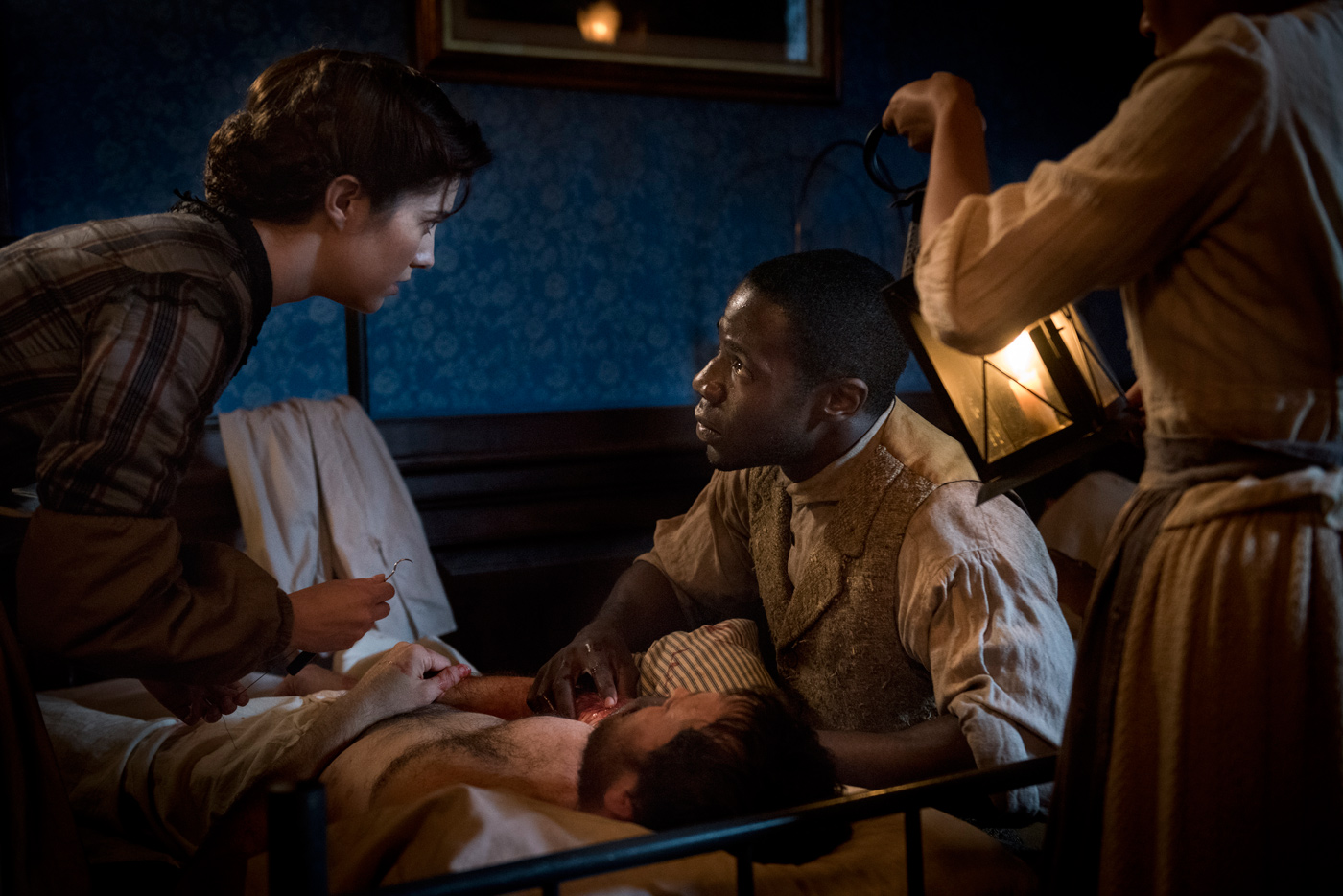DPs Stephen St. John and Feliks Parnell recreate the lighting look of a Civil War hospital for PBS’s first dramatic series
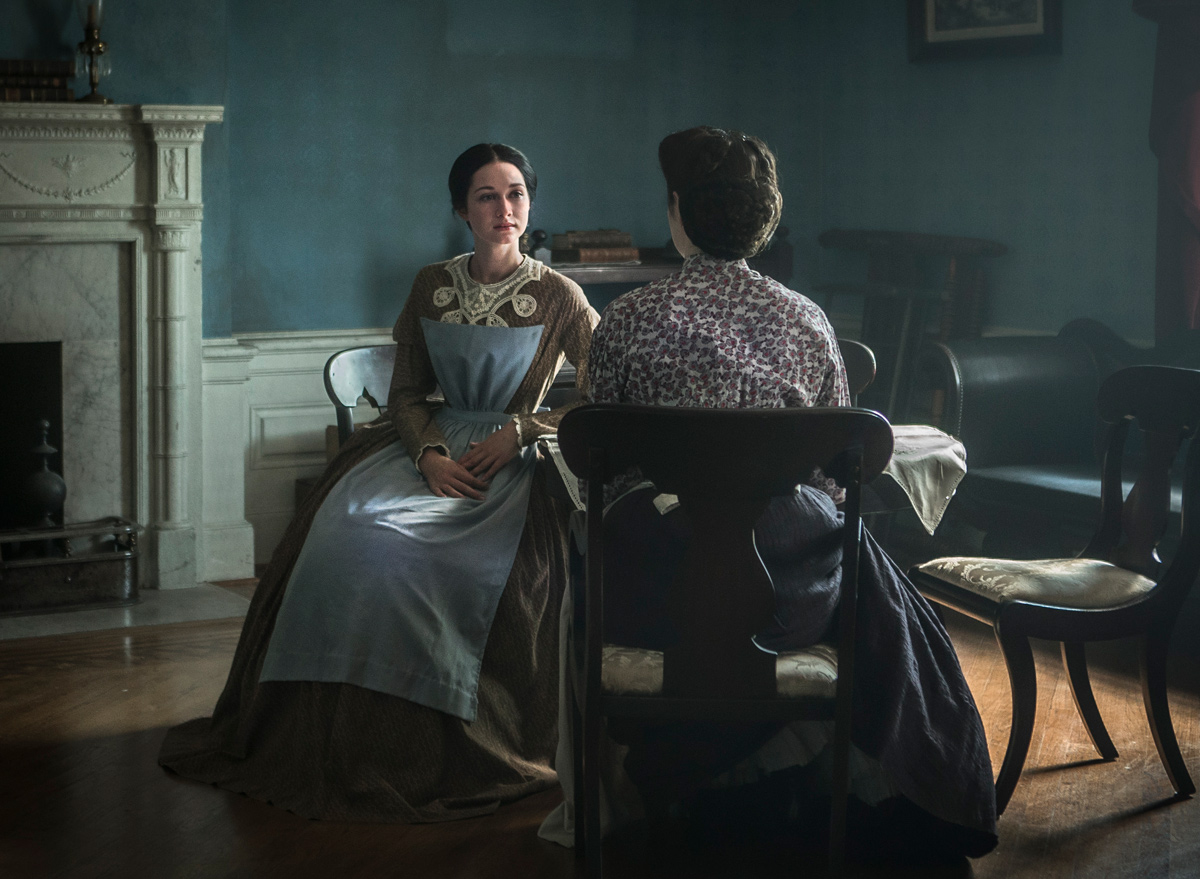
A nurse enters a ward in the former Mansion House Hotel – now commandeered as a Union Army hospital – carrying only a candle, its light traveling with her along her path in an otherwise dark room. Earlier in the day, she chatted with a doctor in the hospital’s lobby, their faces barely visible. Thus was the light of 1860s America and how life in a Civil War era hospital (in Alexandria, VA) is portrayed on Mercy Street, PBS’ first self-produced dramatic series, executive produced by Ridley Scott and Scott Free Films, along with former ER showrunner David Zabel, among others.
From the beginning, we wanted to keep it very natural,” describes Roxann Dawson, who directed the first three episodes of the six-episode series, now in production on its second season. “Everything was source-specific, either coming from the outside, or from candles inside.” Adds Executive Producer Lisa Wolfinger: “The idea was always to create a naturalistic design using daylight and period-appropriate light sources.”
Civil War–era buildings, which included tall windows for evacuation of hot air in the summertime, allowed for abundant sunlight. When darkness came, gaslight, Wolfinger notes, “was in private residences and still largely the preserve of the wealthy. Middle-class and working-class homes were mostly lit with kerosene” and candles. “And gas light is relatively dim, compared to electricity, which didn’t arrive until the 1880s. Activities that required light were generally conducted next to a window during the day.”
In fact, much of the series takes place in the hospital’s interior – shot in the Laburnum House, a three-story mansion in Richmond, VA built in 1908 that eventually became part of the now-closed Richmond Memorial Hospital complex (and is currently a private school). Exteriors for the hospital were filmed 20 miles to the south, in Petersburg, making use of the façade of the Petersburg Area Arts League building, a two-story structure (which received a VFX set extension for a third, to match Laburnum’s interior) located on historic East Oak Street, the city’s old main street. The street itself was used for several complex outdoor sequences, showing bustling activity and many extras.
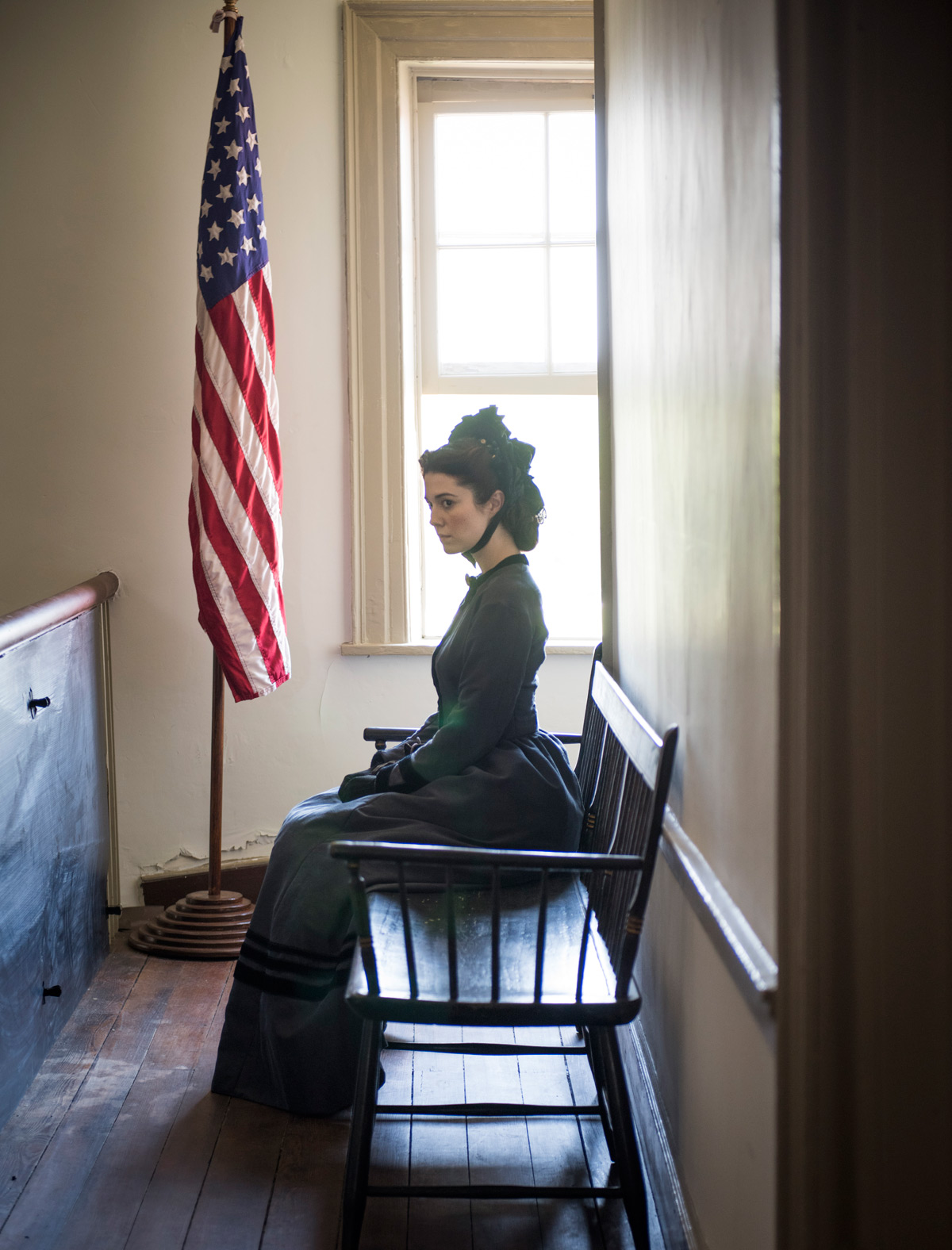
“We went to Alexandria [the location of the real Mansion House], but it’s now a modern city,” shares Production Designer Stephen Marsh. “Petersburg is a small town that still has cobbled streets.” The owners of the hotel are the well-to-do Green family, who, historically, also lived in Alexandria. Petersburg’s historic Centre Hill Mansion, now a museum, was used for both interiors and exteriors of their home. Cinematographer Stephen St. John (who shot the first three episodes with Dawson, while Feliks Parnell shot the second three with director Jeremy Webb) shot in the Laburnum House for Scott Free’s 2013 TV movie, Killing Kennedy. A Civil War history buff, St. John welcomed the return to Richmond, fully aware of the challenges Laburnum posed. “The producers kept referring to it as ‘a stage’ – and it’s not,” St. John explains. “It’s a three-story brick building with no elevator and huge problems. But they’re problems we embraced.”
Interiors were lit from the outside, through windows, because as St. John continues, “it was the only way to be period-correct.” Adds Dawson, “We would be shooting something inside and not see a single light inside the building. It was all external, as it would have been in those days.”
To accomplish this, Gaffer – and fellow Killing Kennedy veteran – Jim Grce (pronounced “Gerch”) ringed Laburnum with six 125-foot Condors to get light into any window on any floor of the building. The smaller, lighter Teupen Crawler Lift, which has tank-track-type propulsion, was used on a delicate tile patio in the back of the building.
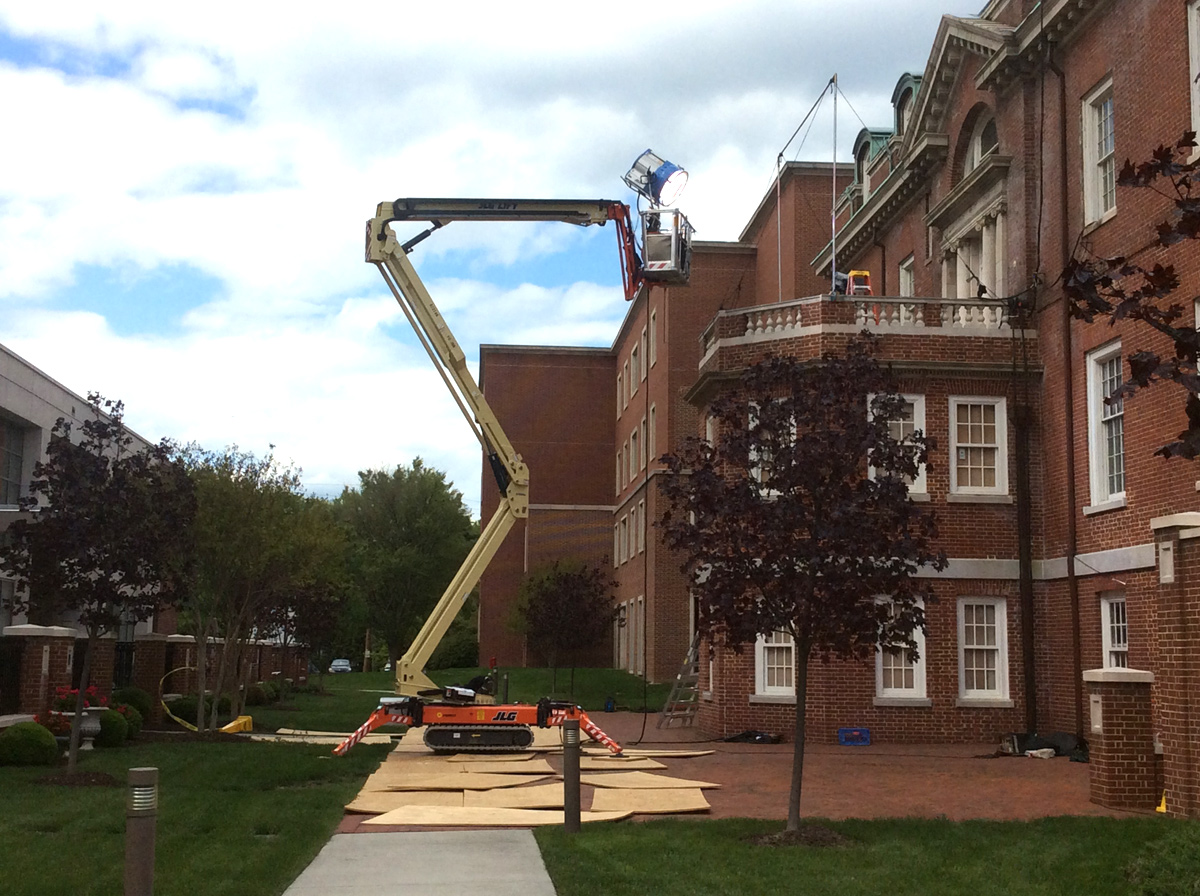
“The Teupen has a 60-foot lift and a base that self-levels,” Grce explains. “It was light enough that we could send a light and a man up in there, without damaging anything. We’d use it in areas that were very uneven, that couldn’t level, as well as in forest scenes, because with those tracks you could get in anywhere.”
St. John preferred HMIs and Arri M-Series lamps, while Parnell went with tungsten – both DP’s achieving the same quality of light through different instruments. St. John says he needed the HMI’s to “penetrate the heavy fabric on the window coverings,” while Parnell, who hasn’t used HMI sources for 15 years, notes, “There’s a tradeoff because you have to have blue gel, full CTB, to bring them to daylight color temperature. So you lose intensity, but it’s a full-spectrum light.”
“Of course, there’s nothing better than natural light coming through the windows,” Parnell adds. “As the sun would set – and the color temperature, as well as its intensity changed – I would just increase the amount of light I was using to supplement it, and then just push the camera a little bit more. You can open the stop and change the ASA, which gives you more sensitivity.” Grce would also supplement with various instruments inside the room, where needed.
For one set on Laburnum’s first floor, an existing window had been nearly bricked closed in the 1960s by the construction of an adjacent hospital building – and light was needed to be seen coming in that window frame. With just an inch gap to the brick facing, Grce applied a pair of 4-by-4-foot SourceMaker LED Blankets.
“They’re a quarter-inch thick and just like a blanket, so you can mold them to any shape,” he offers. “We put diffusion on them and, because they’re variable color temperature, we could set them to match what was coming in through the other windows.”
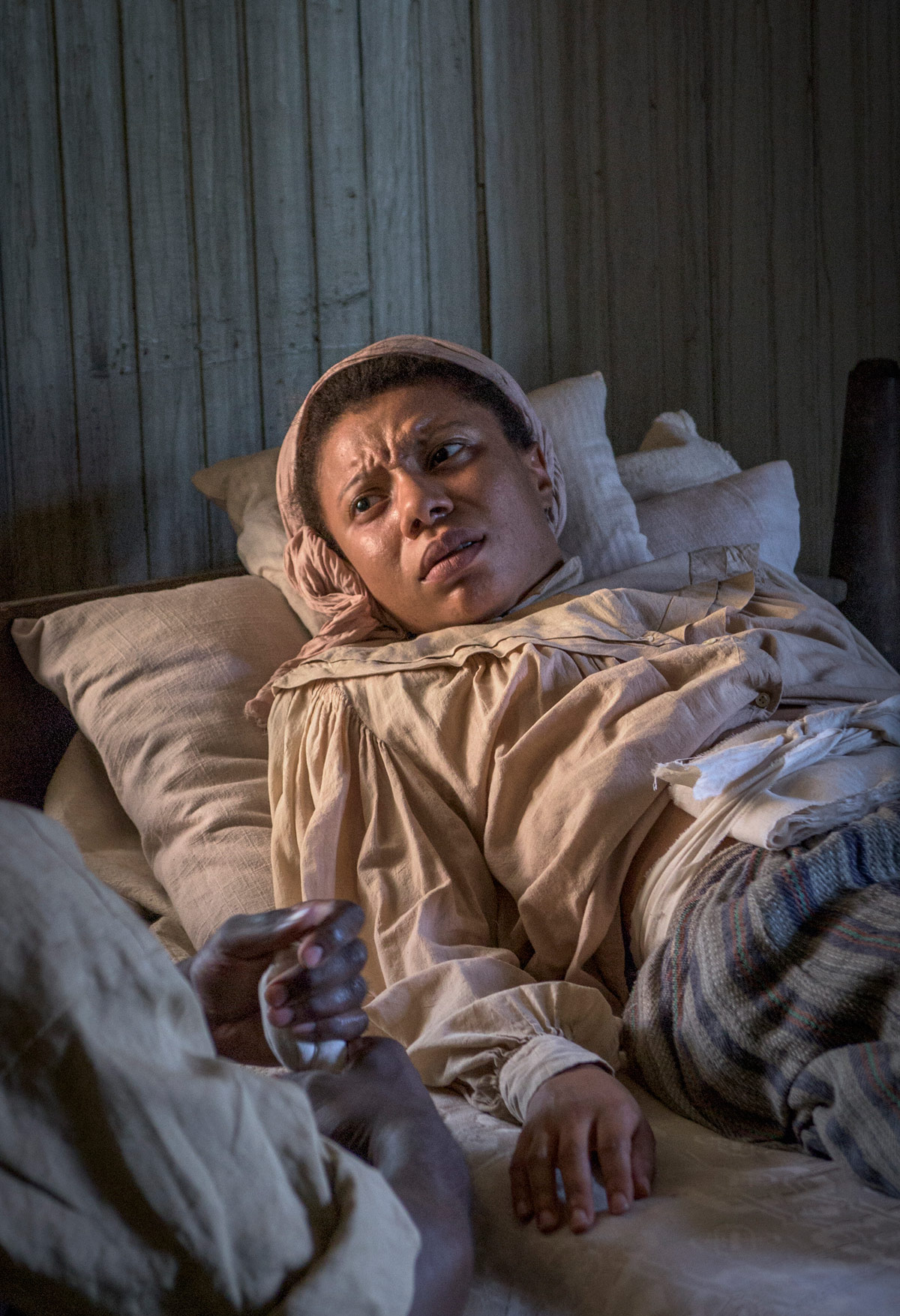
Historically, surgeries were performed near a window during the day, and if more light was needed, a mirror was taken off a wall to reflect more sunlight onto the surgeon’s work. St. John suggested using two mirrors, with Grce shining an M90 HMI into a flat mirror across the room, whose light would then be bounced into a concave mirror that would focus the light onto the surgery site. The latter glass was in frame and held by grip Hank Atterbury, dressed up for the part. “He’s been in a lot of historical Revolutionary and Civil War stuff, so he was totally game for it,” St. John smiles.
Cross-boarded episodes meant rapid shifts in lighting, from sunlight to dusk to nighttime; beside Grce’s lighting Condors at each window, the grips had large 20-by-20-foot Ultra Bounce flyswatters, either black or white, to block out the real sun, or tone it down with a quarter grid. “It was really a ballet of Condors out there – ours and the grips’,” the gaffer states. “One would come in to block the light for a night scene, and then one of mine would come in to add the light for another scene.”
Keeping track of so many lighting and photographic setups was a challenge, so Best Boy Electric Wade Tyree had team member Tim Reilly collect a complete set of data for each scene – lighting instruments used, photos showing positioning of Condors/lights outside the building, color temperature, ASA, filtration, etc. “We could easily say, ‘What did that look like? Could you pull up the look for that? What was the color temperature there?’” notes DIT Ian Edwards. “We were working with variable-temperature LED lights, so that was especially important.”
Still, much of Mercy Street takes place in the shadows; actors are often lit by candles they carry, or with bounce from ambient light, with their faces barely visible. “I love working with silhouettes,” Dawson says. “Here, it’s not used to keep a secret, but rather an extension of what we would naturally be seeing under those circumstances.”
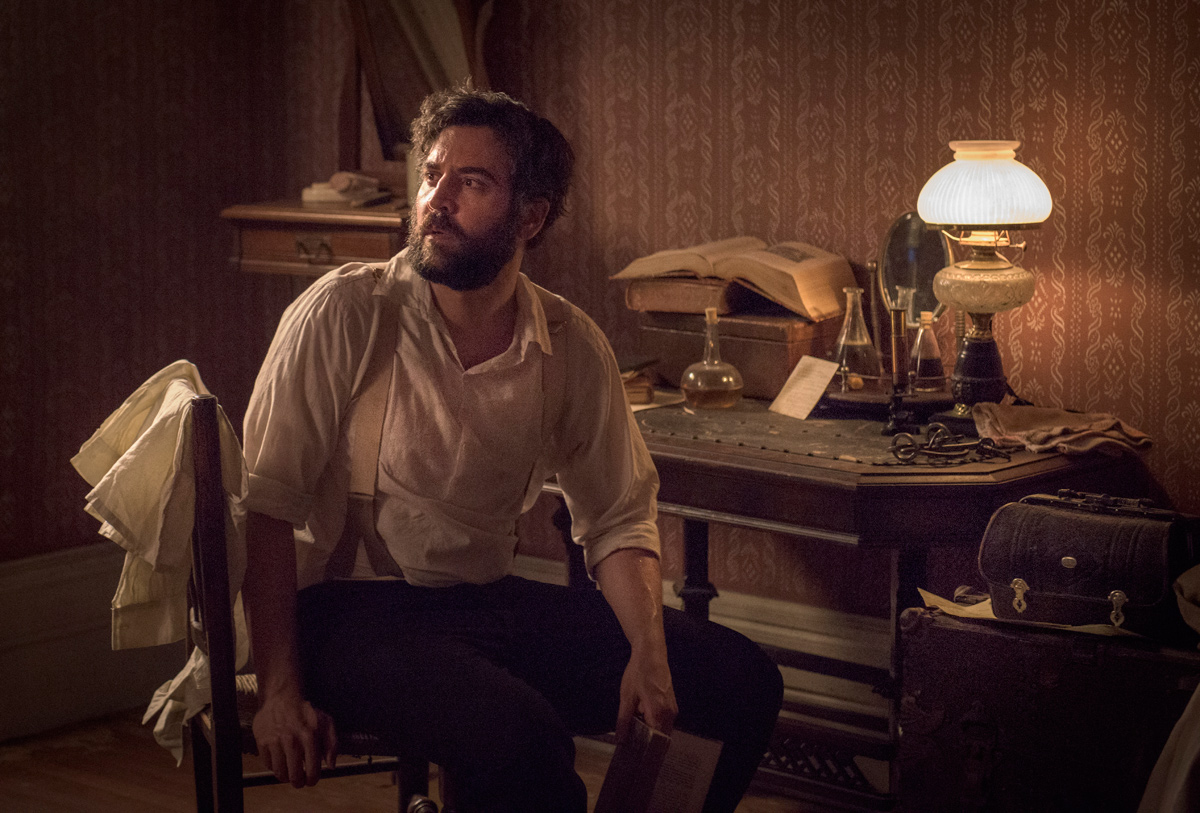
St. John found the perfect ally to capture this darkness in the ARRI ALEXA. “It just really digs in and finds that image, far more than film ever did,” he remarks. “I was a film guy – I came up from where ‘You’re at 1000 ASA’ was really out there, and starting to think about grain issues. Now 1000 is the starting point. With the Alexa, we shoot out of the box at 800 ASA and go to 1600 ASA without even thinking about it.”
“There were times we’d be shooting wide open at 1280 ASA with just candlelight or practical light, and the camera was seeing more than our eyes can see,” First AC Elizabeth Heslep adds. In fact, Heslep would have to turn off the Alexa’s onscreen monitor and indicator lights. “They would light up the room and show up in the image,” she says.
For all the candlelight work, Tyree supplied double-wick candles with small Lightgear LED strips embedded into them, something developed by his team for TURN: Washington’s Spies, another Richmond-filmed series. While the candle flames did the work of lighting the scene, the LEDs helped light the face of the actors carrying the candles. Cast members had to be coached to keep the candles held in such a way to avoid revealing the presence of the LEDs to the lens.
“Contrary to the way we use light now – turning an overhead light on to light a room’s entire space before entering a fully-lit space,” Dawson explains, “in pre-electric times, the room’s light source traveled with the person carrying it, leaving darkness behind and ahead of them, so it was wonderful to include the source light in our frame.” Grce would sometimes augment such light with carefully placed LED fixtures, subtly dimmed up and down as the actor moved across a room.
Lenses were Cooke S4s, often with Schneider Classic Soft filters, which Parnell describes as having “beautiful contrast and color properties, and [they are] terrific at handling bright light sources, flaring in an acceptable way.”
Most of the show was shot two-camera, with A-camera/Steadicam chores handled by Simon Jayes, whom St. John had known when Jayes owned Technocrane Ltd., and, more recently, from his work on True Blood.
“It was designed as a Steadicam show from the script level,” Jayes notes. “You can go from character to character, trading off between different storylines.” In fact, a complex Steadicam shot is used as soon as Nurse Mary (Mary Elizabeth Winstead) arrives at the hospital in the first episode. As Dawson describes: “The Steadicam pulls us into the center of all this carnage, through Mary’s point of view. It allows us to look at all the spaces, and to feel the movement, as though we’re moving through the various rooms. Simon is unbelievably talented, and Stephen fought to have him.”
Dawson would choreograph such moves with St. John (or Parnell), Jayes, Marsh and Grce, designing shots that follow conversations, i.e., from the hospital’s wood-paneled first floor former library into the darker entryway, into a brightly-lit ward, and then handed off to follow another conversation into another more warmly lit room.
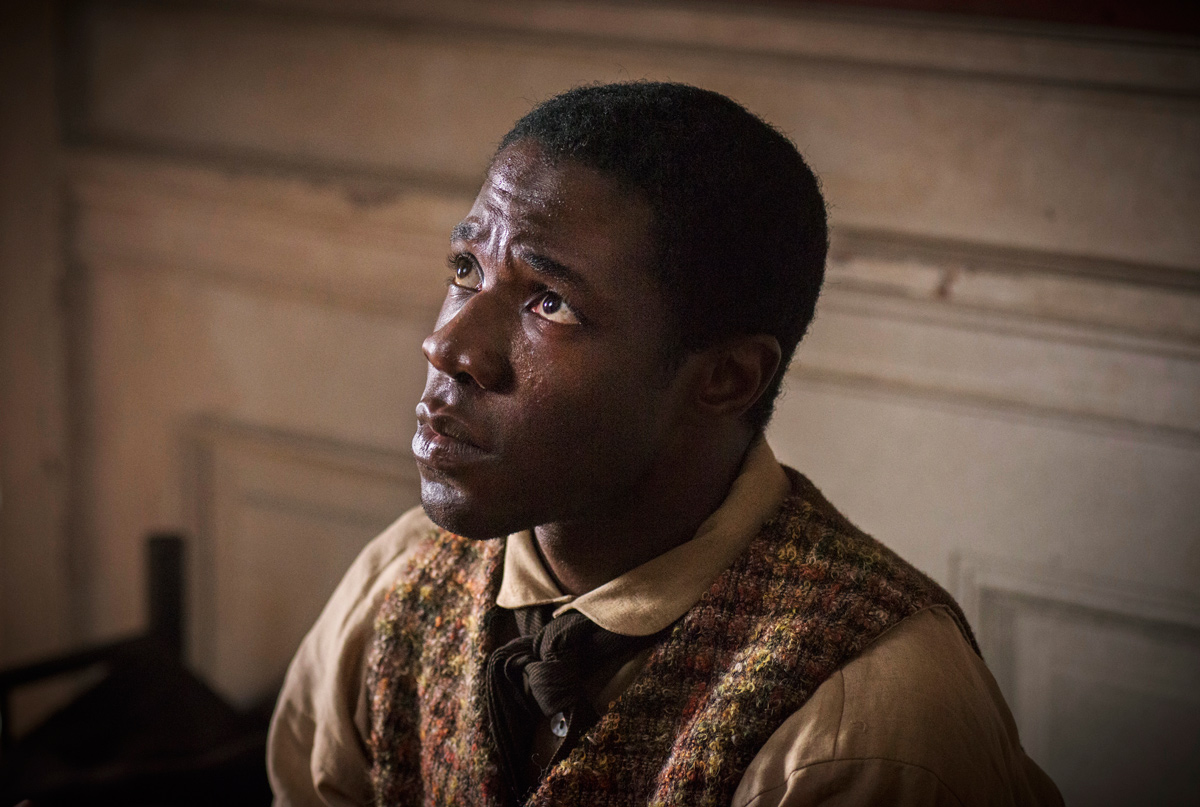
“We designed the daytime lighting so that characters could move freely in and out of light as they walked and talked,” Wolfinger adds. “That felt more naturalistic, allowing them to encounter the kind of light they would have during that era.”
Jayes worked closely not only with Grce, who would supply supplementary lighting instruments in and out of shots as they progressed, but also with the art department, who created gag stubs of beds, for example, which could be placed and seen in the shot and then moved out of the way. “It wasn’t just for me, but the herd of elephants that had to accompany me as I moved along,” Jayes laughs, referring to the many grips and other crew that accompanied with lights, bounces and other items along his path.
Moving camera shots through different kinds of lighting required constant iris pulls by Edwards, sometimes with as many as five or six stops’ compensation.
“There wasn’t a shot in the show I wasn’t riding iris,” the DIT recalls. Heslep would similarly be challenged to pull focus through different lighting changes, always working from her monitor to capture whatever was required – as well as whatever business of interest from the many skilled background performers.
“I would get guidance from Roxann and Simon, but they would also let me play with it and find those moments,” Heslep recounts. “You might let the main actor blow through, but you really want to concentrate on the guy screaming in the corner.”
Adds Jayes, “Liz has very good storytelling instincts for where the focus should be, which is such an important quality in a first AC.”
St. John found the investment from all of the local crew he had on the project key to recreating the naturalistic lighting critical to the show’s look. “It was a great advantage knowing I was going back to a city to work with a group I’d worked with before, and who have investment in the story they’re telling. I knew that when we had to go deep and find a way to get a shot in the dark, these guys would know how to do it.”
by Matt Hurwitz /photos by Antony Platt/PBS

